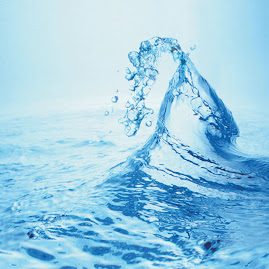Everyone carries a toxic burden.
Chances are that we have multiple types of toxins in our body.
Where do these toxins come from? The food we eat, the water we drink and the air we breath for starters. We also absorb toxins through our skin. We come into contact with so many hundreds of chemicals daily that it's a wonder that we don't carry more body toxins.
Scientists are discovering that many environmental chemicals are making their way into our bodies, and that they may have dramatic impacts on health. Some chemicals are directly toxic to living tissues, others are carcinogenic, and some, such as plasticizers and farm chemicals, lead to disruptions in hormonal balance or disrupt the nervous system. Multiple estrogen mimics exist in our environment; these tend to increase ovarian and breast cancer. Other compunds are known to disrupt thyroid functions. The U.S. Environmental Protection Agency (EPA) describes these toxins as Persistent Bioaccumulative and Toxic pollutants (PBTs) and attributes to them a wide range of health problems, including cancers, neurological, and hormonal problems.
While many toxins have been studied to determine their safety, we should recognize the shortfall of studies when assessing risk. Most studies are not performed on humans (for obvious reasons), but humans respond differently to a toxin than a test animal (or a culture of cells). Consider that chocolate is toxic to dogs, but not to humans. One animal's poison is another's cake topping.
Scientists are also beginning to understand that certain toxins cause harm in amounts previously thought to be too small to be harmful. The real unknown about environmental chemicals is that we have no idea what happens when these compounds join together in a living being. While "substance X" has been studied for toxicity and "substance Y" may have also been studied, no one knows what happens when you take in both at the same time. Nor do we have any idea what happens when one is exposed to substances X, Y, and Z in tandem.
Toxicity studies also don’t consider the impact these chemicals may have on children, who get a larger dose (because of their lower body weight) when exposed to the same chemicals as adults.
Reducing exposure to environmental chemicals and ridding ourselves of chemicals is no easy task, but one that can happen with clean air, clean water preferably alkaline ionized water, and a sensible diet.

No comments:
Post a Comment